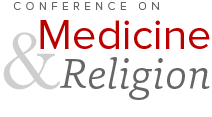The Art of Dying in the 21st Century
Courtney Campbell, Ph.D., Hundere Professor of Religion and Culture, Oregon State University
The Danish philosopher Soren Kierkegaard wrote that “dying well is the highest wisdom of life.” An important religious tradition of the medieval period, the artes moriandi, or “art of dying” has been appropriated and re-interpreted by many prominent scholars and professionals for application to issues of end-of-life care in our era. The medical appropriation of the artes moriandi can provide practical direction for patients and their families, for physicians and other professional caregivers, and for religious communities. The artes moriandi places the patient and their physical and spiritual needs at the center of the dying process, emphasizes the presence of a community of caring, and resists the tendency towards medicalization of dying. It calls upon the medical community to provide forms of healing even when curing the patient is no longer possible.
Our presentation will begin by relating both personal and professional experiences of the dying experience that manifest features of the way of dying in modern medical culture, features that call out for the retrieval and implementation of the artes moriandi. We then discuss the medical appropriation of the artes moriandi by such physician-writers as Katy Butler, Ira Byock, Atul Gawande, and Paul Kalanithi. We conclude by considering how these writers invite creating spaces for dialogue between medical and religious constructions of the dying experience.
Our presentation will begin by relating both personal and professional experiences of the dying experience that manifest features of the way of dying in modern medical culture, features that call out for the retrieval and implementation of the artes moriandi. We then discuss the medical appropriation of the artes moriandi by such physician-writers as Katy Butler, Ira Byock, Atul Gawande, and Paul Kalanithi. We conclude by considering how these writers invite creating spaces for dialogue between medical and religious constructions of the dying experience.
